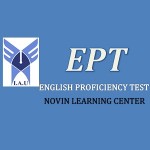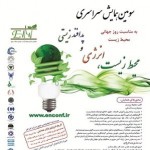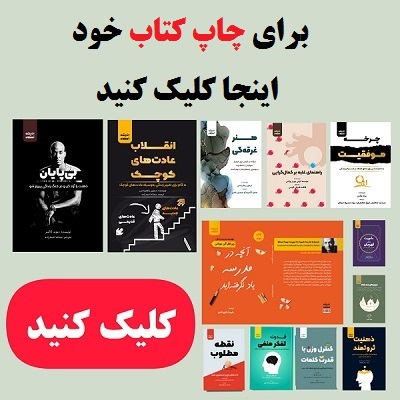کاربرد روش دلفی-AHP جهت اولویت بندی چرخه بازیافت WEEE به عنوان ابزار تصمیم گیری مدیریت ضایعات
Application of Delphi-AHP methods to select the priorities of WEEE for recycling in a waste management decision-making tool
تاریخ: ۲۰۱۳
پایگاه: الزویر
![]()
نام مجله: Journal of environmental management
قیمت: ۲۰۰,۰۰۰ ریال
تعداد صفحات انگلیسی: ۸
تعداد صفحات فارسی: ۱۳
کد: ۴۰۰۳۷
چکیده فارسی
مدیریت ضایعات تجهیزات الکتریکی و الکترونیکی یا E-Waste)WEEE) به عنوان بحث اصلی در ارتباط با مقدار زیادی از ضایعات ناشی از مصرف محصولات الکتریکی و الکترونیکی بوجود آمده است. در سال ۲۰۰۳ کره سیستم مسئولیت تولید کننده (EPR) را به وجود آورد تا مقدار محصولات الکترونیکی را جهت سوق و ارتقاء بازیابی منابع از WEEE کاهش دهد. EPR به طور جاری و مستقیم همه ده محصول الکتریکی و الکترونیکی را تنظیم میکند. این مقاله نتایج کاربرد روش دلفی و مدل فرآیند تحلیل سلسله مراتبی را به عنوان ابزاری در فرایند خط مشیگذاری مدیریت WEEE شرح میدهد. به طور ویژه این مقاله متمرکز بر کاربرد تکنیک دلفی- AHP جهت تعیین ارجحیت WEEE برای استفاده در سیستم EPR، میباشد. اوزان کمی مدل AHP جهت تعیین اولویتبندی محصولات الکتریکی و الکترونیکی، برای تنظیم بالقوه، محاسبه شده بودند. پس از کاربرد معیارهای مورد استفاده در مدل AHP نتایج برآورد میکند که ۱۰ هدف برتر چرخه بازیافت محصولات جهت گسترش لیست WEEE به ترتیب شامل؛ وکیوم، فنهای الکتریکی، دستگاه پخت برنج، فریزرهای بزرگ، ماکرویو، تصفیه کنندههای آب، تصفیهکنندههای هوا، رطوبتگیر، خشککن، و تلفن میشوند. روش دلفی- AHP مطروح میتواند یک وسیله کاراتری جهت انتخاب WEEE به نسبت روشهای ارزیابی که مبتنی بر قضاوتهای حرفهای و یا براساس دادههای محدود موجود هستند ارائه دهد. با ارائه موارد WEEE برای تنظیم، روش دلفی-AHP میتواند قضاوتهای ذهنی و غیرضروری را حذف و به تصمیم گیرندگان مدیریت WEEE جهت اولویتبندی بالقوه WEEE کمک کند. به طور کلی تر کار انجام شده در این مطالعه یک نمونه از چگونگی مدلینگ دلفی- AHP میباشد که میتواند به عنوان ابزار فرآیند تصمیمگیری در مدیریت WEEE بکار رود.
چکیده انگلیسی
The management of waste electrical and electronic equipment (WEEE) or electronic waste (e-waste) has become a major issue of concern for solid waste communities due to the large volumes of waste being generated from the consumption of modern electrical and electronic products. In 2003, Korea introduced the extended producer responsibility (EPR) system to reduce the amount of electronic products to be disposed and to promote resource recovery from WEEE. The EPR currently regulates a total of 10 electrical and electronic products. This paper presents the results of the application of the Delphi method and analytical hierarchy process (AHP) modeling to the WEEE management tool in the policy-making process. Specifically, this paper focuses on the application of the Delphi-AHP technique to determine the WEEE priority to be included in the EPR system. Appropriate evaluation criteria were derived using the Delphi method to assess the potential selection and priority among electrical and electronic products that will be regulated by the EPR system. Quantitative weightings from the AHP model were calculated to identify the priorities of electrical and electronic products to be potentially regulated. After applying all the criteria using the AHP model, the results indicate that the top 10 target recycling products for the expansion of the WEEE list were found to be vacuum cleaners, electric fans, rice cookers, large freezers, microwave ovens, water purifiers, air purifiers, humidifiers, dryers, and telephones in order from the first to last. The proposed Delphi-AHP method can offer a more efficient means of selecting WEEE than subjective assessment methods that are often based on professional judgment or limited available data. By providing WEEE items to be regulated, the proposed Delphi-AHP method can eliminate uncertainty and subjective assessment and enable WEEE management policy-makers to identify the priority of potential WEEE. More generally, the work performed in this study is an example of how Delphi-AHP modeling can be used as a decision-making process tool in WEEE management
مشخصات استنادی
Kim, M., Jang, Y. C., & Lee, S. (2013). Application of Delphi-AHP methods to select the priorities of WEEE for recycling in a waste management decision-making tool. Journal of environmental management, 128, 941-948
دانلود اصل مقاله
 ویژگیهای مقاله کاربرد روش دلفی-AHP جهت اولویت بندی چرخه بازیافت WEEE به عنوان ابزار تصمیم گیری مدیریت ضایعات
ویژگیهای مقاله کاربرد روش دلفی-AHP جهت اولویت بندی چرخه بازیافت WEEE به عنوان ابزار تصمیم گیری مدیریت ضایعات
مقاله “کاربرد روش دلفی-AHP جهت اولویت بندی چرخه بازیافت WEEE به عنوان ابزار تصمیم گیری مدیریت ضایعات” در سال ۲۰۱۳ در مجله Journal of environmental management چاپ شده و در پایگاه اطلاعاتی الزویر نمایه شده است. این مقاله به بررسی مدیریت ضایعات تجهیزات الکتریکی و الکترونیکی یا E-Waste)WEEE) و تکنیک دلفی- AHP پرداخته است. همچنین براساس اطلاعات پایگاه اطلاعاتی گوگل اسکولار این مقاله ۱۵بار مورد استناد قرار گرفته است.









دیدگاه خود را ثبت کنید
تمایل دارید در گفتگوها شرکت کنید؟در گفتگو ها شرکت کنید.